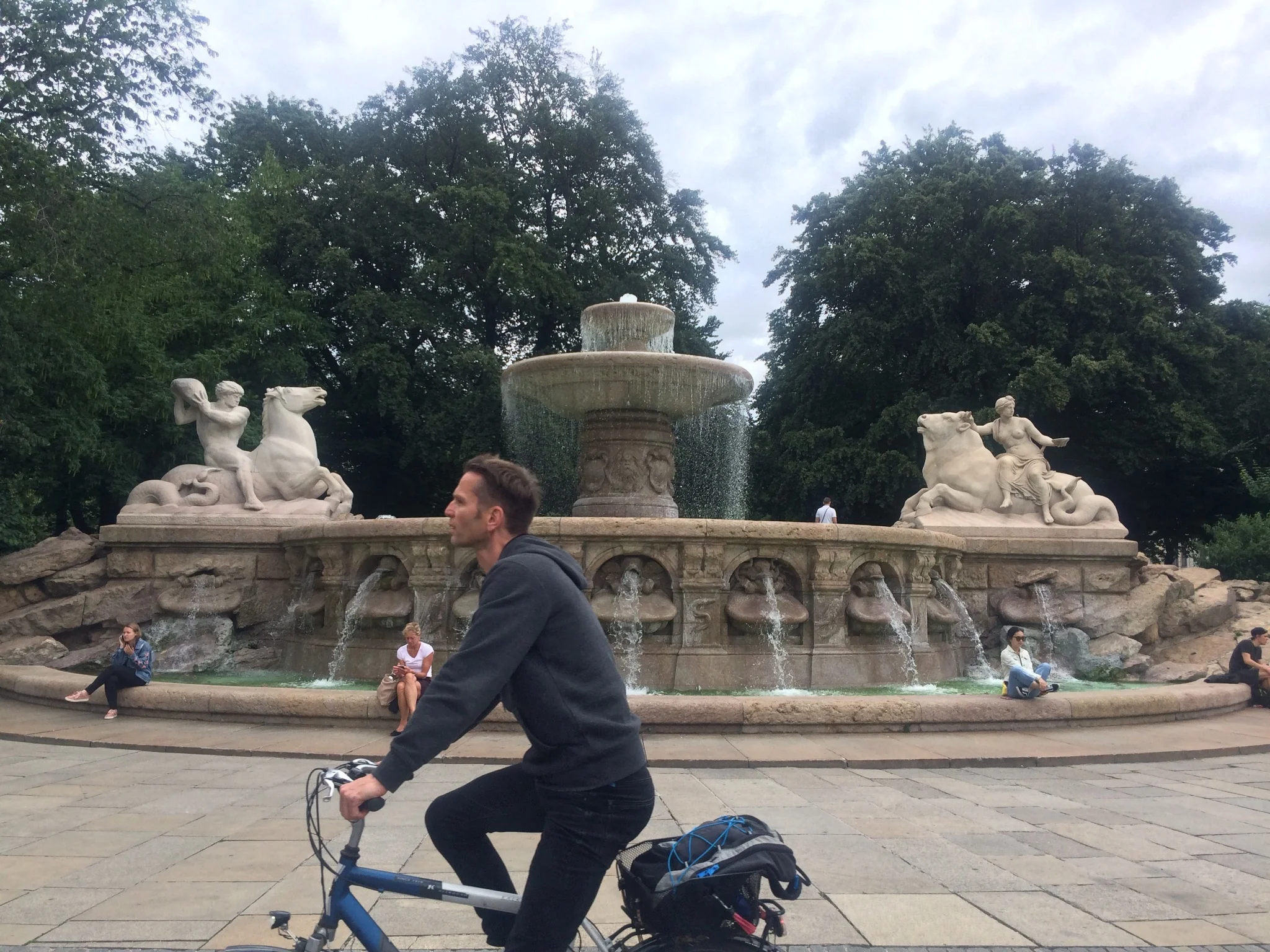Munich: Day four

After our eight-hour flight, Pat and I arrived in the Munich airport around 8 A.M. We made it through customs super easily, which surprised me. The agent only asked me how long I’d be in the country for.
“Hungary, for about two weeks,” I told him nervously. Maybe because we weren’t planning on staying in Germany for more than a day, he decided not to worry about me too much. We spent a little time in the airport exchanging currency, using the bathrooms to get the plane gunk off, and use WiFi to make a plan for the next leg of our trip.
We found a bus, after much debate about which bus line we actually needed because we couldn’t read any of the sign. This was our first encounter with a different language and, needless to say, we were pretty confused. We took a bus through the city to the downtown train station where I had to sit on the curb for a minute because I felt motion sick. We got a snack then went to ZOB, the bus station, and purchased an overnight ticket from Munich to Budapest for that night.
With backpacks in tow, we set out toward the city center to see what we could see. One of the first things we both noticed was the incredible number of bicyclists in the city. Everywhere you looked it was like the Peloton was in town and every post or fence had at least a few bikes chained to it. Some bikes were really fancy too, or even just had the wheel locked to the frame and left outside a shop. Every sidewalk was divided into a pedestrian area and a bike lane, making it feel safe to walk, even with so much bike traffic.
According to a report by wired.com Munich recently has built more bicycle infrastructure than any other city in Germany and has plans for 14 bicycle superhighways, hopefully encouraging people from outside the city to use their bikes. Bicycles account for 17 percent of all traffic in Munich and 80 percent of Munich residents own bikes. There are 750 miles (1,200 km) of bike paths in the city and bikes can use one-way streets in both directions. If Pat and I hadn’t had our backpacks with us we would’ve rented bikes to see Munich like the locals do.
One of the many bike commuters rides his bike in downtown Munich.
We saw Marienplatz (Marien Square), the main plaza in downtown Munich, where there is a famous Glokenspheil, or clock. The Frauenkirche, perhaps Munich’s most identifiable skyline building was under construction so we couldn’t get very close to it, but it was still beautiful from far away.
We also saw the Viktualienmarkt, Munich’s daily farmer’s market, which dates back to the 19th century. There were street musicians and 140 different booths filled with handmade food, honey, meats, flowers, decorations, houseplants and herbs. There was even a stand that had Christmas ornaments even though it’s June.
In the English Garden, Pat and I walked some of the 48.5 miles of paths through the park. The Englischer Garten is larger than Central Park in New York City and is modeled after popular English gardens of the 18th and 19th centuries. We met a guy named Alfonso, who is from Costa Rica. He speaks Spanish, English and German. It was really cool to see how he interacted with so many people because he had a little bit of language to use. Pat and I both want to work on our language skills after meeting him. He invited us to go see him in the cloud forest in Costa Rica one day.
We ended our day at Hofbrauhaus to drink Bier. This is one of Munich’s most famous beer halls. It is a giant room with giant steins, classic live German music and delicious sauerkraut, albeit rather slow service. Though once the beer started flowing the wait didn’t matter.



